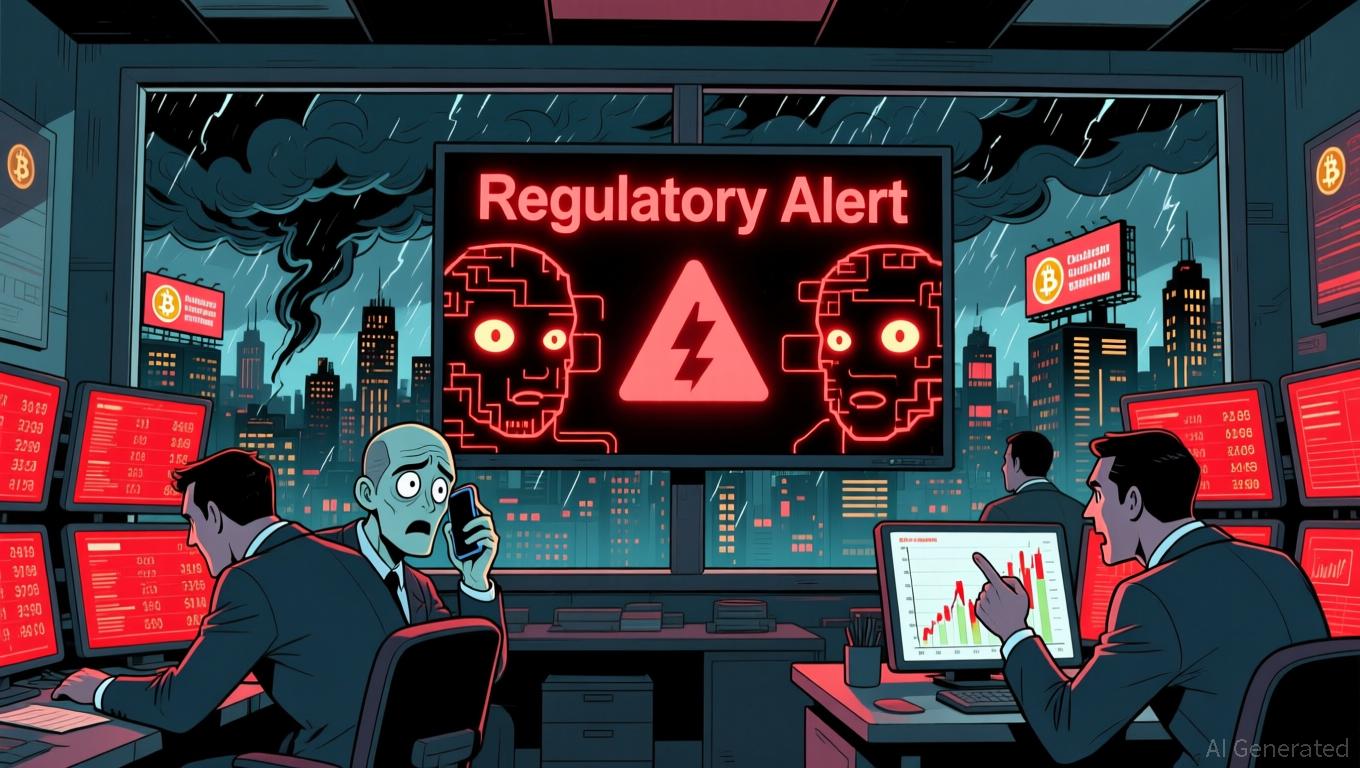Fiat's Secret Devaluation Fuels Crypto Boom in 2026, Says Pal
- Raoul Pal and Julien Bittel predict crypto bull cycle could extend to 2026 due to structural liquidity expansion and demographic shifts. - They argue 8% annual liquidity growth from declining productivity and labor participation creates favorable conditions for high-beta assets like Bitcoin. - Bitcoin's price alignment with ISM manufacturing index and "hidden debasement" of fiat currencies supports extended cycle, with potential $200K price targets. - Current $9T debt refinancing window and near-50 ISM t

Raoul Pal, Real Vision’s co-founder and a macro analyst, has pushed back his expectations for the end of the current crypto bull market, now suggesting it could last until 2026. He shared this perspective during a September 25 “Everything Code” masterclass with Julien Bittel, Global Macro Investor’s head of macro research. Their outlook is based on a model that links global liquidity, demographic trends, and debt patterns. According to Pal and Bittel, structural issues—such as a shrinking workforce and weak productivity—are prompting governments to boost liquidity by about 8% each year, which benefits high-volatility assets like cryptocurrencies.
The pair pointed out that standard indicators like inflation rates can mask the “hidden debasement” of fiat money, estimating that investments need to clear an 11% return just to preserve real value. To address this, they recommend focusing heavily on crypto and technology assets, which have outperformed traditional portfolios in GMI’s long-term studies. Pal referred to
Their analysis centers on the relationship between liquidity and broader economic signals. GMI’s Financial Conditions Index—which tracks commodities, the strength of the dollar, and interest rates—leads overall liquidity by three months, which itself leads the ISM Manufacturing Index by six months. With the ISM currently below 50, it sets the tone for risk assets, including crypto. Pal and Bittel noted that Bitcoin’s price movements closely follow ISM trends, with its patterns resembling those of small-cap stocks, cyclical sectors, and emerging markets. As the ISM nears 50, risk appetite tends to move down the capital stack, shifting from Bitcoin to
This market cycle is distinct from the 2020–2021 rally, which peaked when liquidity and the ISM both hit highs in March 2021. Currently, liquidity is accelerating again amid a $9 trillion debt-refinancing phase, while the ISM remains below 50 and forward-looking indicators are rising. Pal compared this setup to the late 2017 surge, but with the possibility of the cycle stretching into 2026 due to the extended refinancing period. “It is extremely unlikely that it tops this year,” he said, pointing to the lack of peaks in both liquidity and the ISM.
Bittel observed that the recent sideways movement in crypto prices is tied to a $500 billion liquidity withdrawal from the Treasury General Account since mid-July. However, this outflow is close to reversing, with DeMark indicators signaling a potential turnaround by year-end. The People’s Bank of China’s record-high balance sheet has also helped offset U.S. liquidity pressures. In GMI’s models, Bitcoin’s log-regression channel—dubbed “network adoption rails”—interacts with time and cycle strength to suggest possible price ranges. While these are not firm predictions, they show how a longer cycle could push prices higher, with hypothetical ISM readings in the low 50s corresponding to Bitcoin in the mid-$200,000s.
Pal and Bittel also placed crypto’s expansion within a larger secular S-curve, contrasting inflation in fiat-based assets with earnings and wages tied to GDP. They estimate the digital asset sector could grow from $4 trillion now to $100 trillion by the early 2030s, with Bitcoin playing a role similar to gold in a broader portfolio. Their practical advice includes holding large-cap crypto assets, avoiding leverage, and matching investment horizons to macro cycles rather than short-term price swings.
At the time of writing, the total crypto market capitalization was $3.67 trillion, with Bitcoin trading at $88,617. Pal’s outlook is consistent with wider macro trends, such as a weakening U.S. dollar and looser monetary policy, which have historically fueled crypto rallies. While institutional interest remains strong, the analysts warn against excessive leverage and stress the importance of patience as the cycle develops.
Disclaimer: The content of this article solely reflects the author's opinion and does not represent the platform in any capacity. This article is not intended to serve as a reference for making investment decisions.
You may also like
Why is MUTM's DeFi approach drawing in $18.9 million and 18,000 investors in 2025
- Mutuum Finance (MUTM) has raised $18.9M from 18,200 investors via a 250% presale price surge to $0.035 in Phase 6. - Its dual-lending model combines peer-to-contract and peer-to-peer mechanisms to optimize liquidity and capital efficiency. - Phase 6 nearing 99% completion highlights demand for MUTM's automated, intermediary-free lending via Ethereum-based smart contracts. - The project plans Q4 2025 launch of its public lending protocol on Sepolia testnet, emphasizing transparent decentralized ownership.

Global authorities suspend the growth of Biometric Blockchain due to worries about data privacy
- Worldcoin (WLD) fell 14% amid regulatory crackdowns, token unlocks, and market weakness, outperforming crypto's 9% decline. - Colombia, Philippines, and Thailand ordered operations halted and biometric data deleted over privacy concerns. - 37M WLD tokens ($25M) unlocked recently, worsening sell pressure as price consolidates near $0.63 resistance. - Analysts predict $0.75–$0.85 by 2025 if regulations clarify, but warn of potential drops to $0.26 amid unresolved compliance risks. - Project's viability hin

Bitcoin News Update: Aave's ETHLend 2.0 Disrupts DeFi's Dependence on Wrapped Tokens by Introducing Native Bitcoin
- Aave founder Stani Kulechov announced ETHLend 2.0's 2026 relaunch using native Bitcoin as collateral, diverging from wrapped tokens. - The hybrid P2P-liquidity pool model aims to enhance DeFi efficiency while reducing synthetic asset reliance through cross-chain BTC integration. - This revival aligns with growing institutional demand for non-wrapped BTC and could restore utility for the legacy LEND token. - Despite bearish market conditions, the move signals confidence in Bitcoin's foundational role for

The Rapid Rise of ZK Technology and What It Means for Cryptocurrency Markets
- ZK proof ecosystems saw 2025 breakthroughs in scalability, institutional adoption, and on-chain activity, reshaping blockchain infrastructure and crypto markets. - Projects like zkSync Era (27M+ monthly txns) and StarkNet (tripled TVL) demonstrated ZK-rollups' capacity to handle 15,000+ TPS, accelerating Ethereum's Layer 2 dominance. - Institutional giants including Deutsche Bank , Sony , and Nike integrated ZKP solutions for compliance, with Polygon securing $1B+ in ZKP development funding. - ZKP market